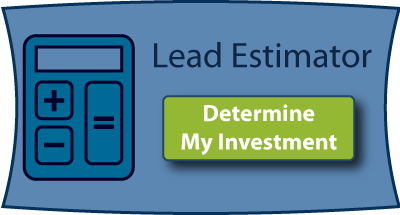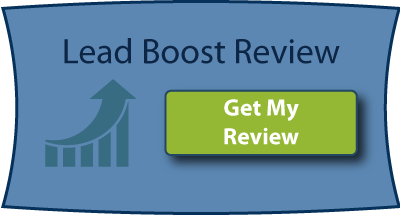Last time, I showed you how Inbound Out marketing compares to trade shows.
You learned that Inbound Out marketing offers a better return on your investment, longer term results, and that it’s a consistent strategy that builds your business over time.
Now it’s time to put it against another Goliath:
Direct mail.
My goal with this series isn’t to convince you to drop other methods in favor of Inbound Out marketing. It’s to make a strong case for this marketing methodology as a valuable addition to your overall strategy.
Direct mail is a time-tested technique, but Inbound Out marketing has been moving with the times much more rapidly.
Here’s how Inbound Out compares to direct mail:
-
Cheaper one-on-one communication with your target audience — Inbound Out marketing takes direct mail’s #1 benefit and makes it more cost-effective.
-
Faster response — This means you can test, iterate, and improve your campaigns much faster.
-
Provide value — Direct mail is often associated with messages that are too salesy with too much hype. Email can be, but not as much. Inbound Out marketing makes sure of this.

And we’re off!
Inbound Out Marketing vs. Direct Mail — One-On-One Communication
Direct mail’s top benefit is having one-on-one communication with your target audience.
You identify the people who are most likely to want your products/services, tailor your copy to elicit that desire, and send your message straight to them.
With the rise of the Internet, technology has made it cheaper to do many of the things we could previously only do in the physical world. This includes direct mail.
Still, direct mail has been an effective method for decades. And as more marketers have moved to the web, there are actually fewer direct mail campaigns. If anything, direct mail may now work better than it did in the past.
The full cost of a direct mail campaign depends on a number of factors:
-
Number of inserts
-
Color application
-
Personalization
-
Volume
-
Presorting
-
Size of postage
-
Address hygiene
-
Mail tracking
-
Working with a provider
-
Mail format
-
Delivery choice
-
And more
The cost of sending an email is almost $0.
Now, this does not mean that your ROI will be greater with email marketing, but with a lower upfront cost, it means that it’s more likely you’ll get a greater return on your investment through email.
The key factor in Inbound Out marketing is targeted outreach. Just like direct mail, you identify your target audience, tailor your outreach to elicit desire in your products or services, and send your message straight to their inbox…
... but for much, much less money.
This means you can redirect the costs you would’ve spent on direct mail to other important services, like a CRM to manage and optimize your list. (Or an agency to guarantee ROI on your campaigns.)
Inbound Out Marketing vs. Direct Mail — Response Time
The key with any outreach is getting a response from your target audience.
This response means they’re engaging with your business, and it allows you to analyze those responses and optimize your next campaign.
In direct mail, this typically involves filling out a form, checking a box, enclosing stickers, etc. These are then returned to the business.
The entire process can take a week just to get one response back. And if you want to follow up, that’s another few days for your mail to arrive and another few days for it to get back to you (if they even respond).
Needless to say, this is inefficient if you’re trying to maximize your ROI as fast as possible.
The Targeted Outreach part of Inbound Out marketing can send the same message to the same audience, instantly.
Those prospects can reply instantly, or you can follow up within a matter of hours if you want to.
Within two days, you will immediately know what worked and what didn’t so you can make your next campaign more effective. In the fast-paced world of business, this efficiency is vital.
Inbound Out Marketing vs. Direct Mail — Providing Value
Everyone hates junk mail.
Everyone hates junk email.
Everyone loves free value.
With direct mail, you’re trying to make the best first impression you can and get people to take action as soon as possible.
You put all of your copywriting skills into those letters and hope they achieve the result you’re looking for. Hardly ever do you send them an article or a piece of free value first, because this would lower your ROI.
Because Inbound Out marketing is less expensive, you can take your time and nurture prospects. You send them free value, build a relationship, and give your prospects the time they need to become customers.
By sending them free value first, they build trust in your business. They open your emails more often and engage with people at your company.
This personal interaction is invaluable when it comes to lead generation. Building this connection over time make your prospects more likely to become customers when they’re really ready to buy.
Wrap Up
Direct mail has its place in business. It has been used for so long because it’s effective. If anything, it may now be more effective.
However, Inbound Out marketing can achieve many of the same results that direct mail can. Those results are just less expensive, faster, and build a relationship with your audience that isn’t feasible with direct mail.
If you’re thinking about adding Inbound Out marketing to your growth strategy, talk to a specialist today or learn more about the process here.
Direct mail like all forms of traditional marketing are changing. Why? Because buyers have changed. Download the CEO's 2016 Guide to Marketing now to learn and execute your own 2016 marketing strategy today.
Takeaways
-
Direct mail is a time-tested technique, but Inbound Out marketing is new and offers important advantages.
-
It allows for lower cost one-on-one communication with your audience.
-
It returns faster results so you can iterate and improve your campaigns.
- Inbound Out marketing builds a connection with prospects that isn’t feasible with direct mail.












